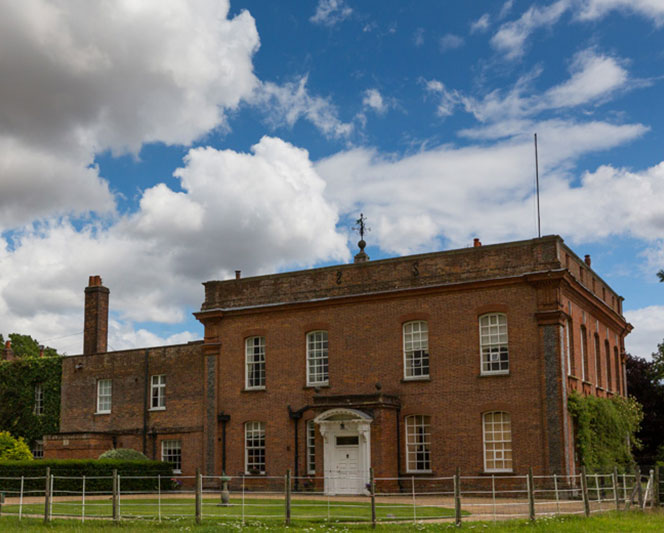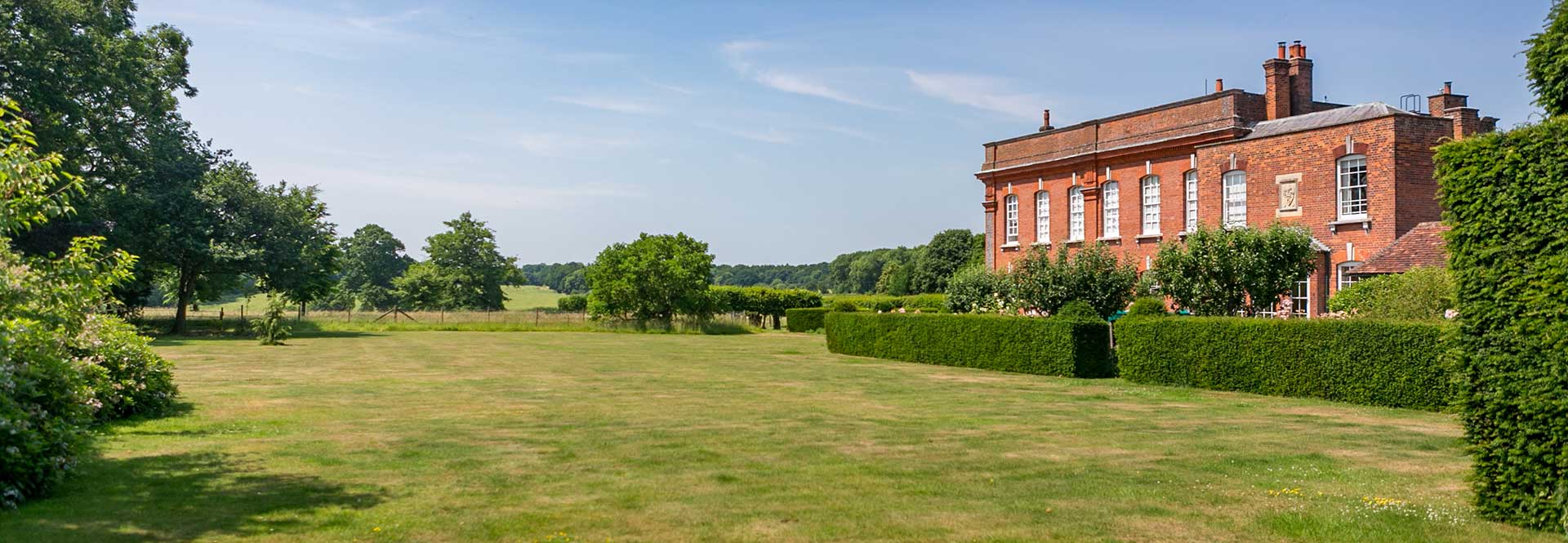Farming
May has at last brought with it some sunshine, and the crops are looking all the happier for it! Since I last wrote all the crops have now been planted, and attention turned to the business of weed and disease control. The conventional wheat has had its first fungicide spray to ward off diseases, in particular yellow rust and septoria. Both of these diseases attack the green leaf, reducing the area available to photosynthesise. There was a time when it would also have had an earlier spray as a matter of routine, but a combination of a lower-input approach, and the breeding of more disease resistant varieties is reducing our reliance on artificial inputs. In what is otherwise a year with relatively high disease pressure the crops have remained fairly clean, and this is of course good news all round.
The oilseed-rape has just about finished flowering, having been yellow for the best part of two months. Prolonged flowering is good in that the more flowers there are, the more pods there will be, and the more food there will be for the pollinators. It is also a bad thing, though, as it can increase the disease pressure – there is a very pernicious fungal pathogen called sclerotinia stem rot, which is caused by petals falling and lodging on the plants in damp and humid conditions. We have sprayed for it, but no more so than would be normal, and we hope that the longer flowering doesn’t present any issues. Overall though the crop looks reasonable.
The organic and Wildfarmed crops, where no spraying is allowed, have been weeded with our 12 metre wide Einbock tined weeder. This is a light harrow, which has 480 spring loaded tines across its width, and predominantly pulls out annual broadleaved weeds, such as cleavers, mayweed and groundsel. It also has the effect of perking up the crop, and can be a really useful tool in thickening up crops that are looking a bit sad. It works by stressing the plant, which then responds vigorously to what it sees is a form of attack, as well as mineralising a bit of nitrogen in the soil and making it available to the plants. It is fairly nerve-wracking operation for the tractor driver however, as the field looks like it’s turning brown and you are killing the crop. The basic advice is set the machine up to be as aggressive as you dare, then turn it up one notch and don’t look behind you!
May is also the time when we plant the environmental plots, and this year we have been planting more winter bird seed areas, and some nectar flower areas. We have also take the opportunity to fill in a few gaps where the very wet winter has meant that some areas with poor drainage have seen crop failures. The result of this is a patchwork of different crops in the same field, the most extreme version of this is in West Well, which is to the east of the footpath running between the Crown and Sceptre and Gaddesden Row. It was planted originally with oilseed rape in August. The OSR failed on some of the headlands, and these were planted with beans in October. Some of the beans survived the winter, and are now flowering beautifully. Other areas didn’t survive, and the largest one of these was planted with spring barley in April. Some of the smaller areas of the bean failures have since been planted with a mix of linseed an clover, although these will not produce a harvestable crop. The end result of this will be seven crops growing in the one field, if you include the maize cover crop and the area of winter bird food, and a prolonged flowering period to keep the bees happy. It is certainly one of the positives of crop failures, if a little management-intensive!
This month has also seen one of the more-difficult management decisions relating to one of our environmental plots. The crop that we have to sow is called a two year legume fallow – basically a mix of gasses and legumes such as clovers and vetches. It has the aim of increasing soil fertility and smothering blackgrass, and has strict rules as to how it is managed. The problem is that it doesn’t smother the blackgrass (we have since learnt), which still needs controlling to prevent what would otherwise be catastrophic levels of seed return. Our only option is to flail it off before the blackgrass seed becomes viable, as both grazing and taking forage off it are prohibited. This seems like madness to us, and a tremendous waste of time and diesel. Some cows would do the same job, with a much lower environmental impact, but for reasons only known to DEFRA this is prohibited. In order to mitigate the impact on the wildlife which has been enjoying it, we have been flailing it in stages, to allow the pollinators to migrate to other areas of the farm.
Speaking of cows, this month has seen the arrival of a few Dexter cattle onto the farm, which are grazing the parkland round the Golden Parsonage. These are a small “dual purpose” breed, meaning they can be used for both beef and milking, and their arrival has caused much entertainment all round. The most interesting aspect of this has been the arrival of an unexpected calf from a young heifer, who not only should have been physically impossible to calve given her youth, but also, unbeknownst to us, had been given the cow equivalent of the pill to make sure of it. Anyway, two weeks after they came here a tiny calf, now named “Nettle Dandy” arrived safe and sound, and after some early dramas is now doing well. Significantly smaller than a labrador, he looks very sweet, and is now charging around happily.
Away from the farm I have been up to Wildfarmed’s head office in London, as one of their longer standing growers, to discuss our end of their supply chain. Very excitingly they are now in Waitrose, having had a big launch this month. I tried to buy some of this home grown break in Berkhamsted a few days in, only to find it sold out, which is good news in a way!
GFJH
May has at last brought with it some sunshine, and the crops are looking all the happier for it! Since I last wrote all the crops have now been planted, and attention turned to the business of weed and disease control. The conventional wheat has had its first fungicide spray to ward off diseases, in particular yellow rust and septoria. Both of these diseases attack the green leaf, reducing the area available to photosynthesise. There was a time when it would also have had an earlier spray as a matter of routine, but a combination of a lower-input approach, and the breeding of more disease resistant varieties is reducing our reliance on artificial inputs. In what is otherwise a year with relatively high disease pressure the crops have remained fairly clean, and this is of course good news all round.
The oilseed-rape has just about finished flowering, having been yellow for the best part of two months. Prolonged flowering is good in that the more flowers there are, the more pods there will be, and the more food there will be for the pollinators. It is also a bad thing, though, as it can increase the disease pressure – there is a very pernicious fungal pathogen called sclerotinia stem rot, which is caused by petals falling and lodging on the plants in damp and humid conditions. We have sprayed for it, but no more so than would be normal, and we hope that the longer flowering doesn’t present any issues. Overall though the crop looks reasonable.
The organic and Wildfarmed crops, where no spraying is allowed, have been weeded with our 12 metre wide Einbock tined weeder. This is a light harrow, which has 480 spring loaded tines across its width, and predominantly pulls out annual broadleaved weeds, such as cleavers, mayweed and groundsel. It also has the effect of perking up the crop, and can be a really useful tool in thickening up crops that are looking a bit sad. It works by stressing the plant, which then responds vigorously to what it sees is a form of attack, as well as mineralising a bit of nitrogen in the soil and making it available to the plants. It is fairly nerve-wracking operation for the tractor driver however, as the field looks like it’s turning brown and you are killing the crop. The basic advice is set the machine up to be as aggressive as you dare, then turn it up one notch and don’t look behind you!
May is also the time when we plant the environmental plots, and this year we have been planting more winter bird seed areas, and some nectar flower areas. We have also take the opportunity to fill in a few gaps where the very wet winter has meant that some areas with poor drainage have seen crop failures. The result of this is a patchwork of different crops in the same field, the most extreme version of this is in West Well, which is to the east of the footpath running between the Crown and Sceptre and Gaddesden Row. It was planted originally with oilseed rape in August. The OSR failed on some of the headlands, and these were planted with beans in October. Some of the beans survived the winter, and are now flowering beautifully. Other areas didn’t survive, and the largest one of these was planted with spring barley in April. Some of the smaller areas of the bean failures have since been planted with a mix of linseed an clover, although these will not produce a harvestable crop. The end result of this will be seven crops growing in the one field, if you include the maize cover crop and the area of winter bird food, and a prolonged flowering period to keep the bees happy. It is certainly one of the positives of crop failures, if a little management-intensive!
This month has also seen one of the more-difficult management decisions relating to one of our environmental plots. The crop that we have to sow is called a two year legume fallow – basically a mix of gasses and legumes such as clovers and vetches. It has the aim of increasing soil fertility and smothering blackgrass, and has strict rules as to how it is managed. The problem is that it doesn’t smother the blackgrass (we have since learnt), which still needs controlling to prevent what would otherwise be catastrophic levels of seed return. Our only option is to flail it off before the blackgrass seed becomes viable, as both grazing and taking forage off it are prohibited. This seems like madness to us, and a tremendous waste of time and diesel. Some cows would do the same job, with a much lower environmental impact, but for reasons only known to DEFRA this is prohibited. In order to mitigate the impact on the wildlife which has been enjoying it, we have been flailing it in stages, to allow the pollinators to migrate to other areas of the farm.
Speaking of cows, this month has seen the arrival of a few Dexter cattle onto the farm, which are grazing the parkland round the Golden Parsonage. These are a small “dual purpose” breed, meaning they can be used for both beef and milking, and their arrival has caused much entertainment all round. The most interesting aspect of this has been the arrival of an unexpected calf from a young heifer, who not only should have been physically impossible to calve given her youth, but also, unbeknownst to us, had been given the cow equivalent of the pill to make sure of it. Anyway, two weeks after they came here a tiny calf, now named “Nettle Dandy” arrived safe and sound, and after some early dramas is now doing well. Significantly smaller than a labrador, he looks very sweet, and is now charging around happily.
Away from the farm I have been up to Wildfarmed’s head office in London, as one of their longer standing growers, to discuss our end of their supply chain. Very excitingly they are now in Waitrose, having had a big launch this month. I tried to buy some of this home grown break in Berkhamsted a few days in, only to find it sold out, which is good news in a way!
GFJH




